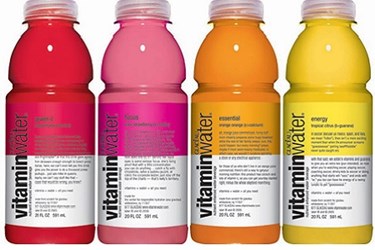Coca-Cola Makes A U-Turn On Vitaminwater Ingredients
By Karla Paris

The company’s Vitaminwater is losing market share, and according to consumers, this is due to Stevia— a low-calorie sweetener that leaves a metallic aftertaste. Coca-Cola has taken action to address this issue
Low-calorie products are available in a variety of food and beverage segments. One of the major growth challenges for the industry includes artificial sweeteners, which are sometimes perceived to be carcinogens and can alter the original flavor of the product it is within.
Coca-Cola is committed to product innovation, but its latest attempt to improve its Vitaminwater seems to have misfired. The Atlanta-based company announced on July 31 the Vitaminwater brand would revert back to its previous taste. The original formula for Vitaminwater consists of a blend of cane sugar and crystalline fructose. Coca-Cola acquired the Vitaminwater brand in 2007 through its purchase of Energy Brands — also known as Glaceau’ — and continues to use stevia in its Vitaminwater Zero line. The beverage maker intends to manufacture an original version of its Vitaminwater this month, slightly more than 90 days since the modification of its formula.
The reversal comes just months after Coca-Cola changed the sweetener in the drink to a mix of sugar and stevia, a low-calorie sweetener infamous for its metallic aftertaste. A social media movement where consumers posted negative feedback about the change inundated the Vitaminwater Facebook page. This isn’t the first time the soda giant had to return to its original formula. After a consumer revolt 29 years ago, the company abandoned its ill-received "New Coke" reformulation within a mere 79 days.
Stevia has been great for food manufacturers, allowing the delivery a clean label, is a sustainable and natural sweetener, and provides traceability — important to today’s consumers — but, at what cost?
Stakes are high for Coca-Cola as it wrestles with artificial sweetener ingredients in its products. The U.S. is the largest market for low-calorie food, followed by several European countries. Additionally, the developing nations in the Asia-Pacific region are expected to show high growth in low-calorie foods over the next five years.
While some consumers dislike the Stevia infusion in products, Coca-Cola still sees potential for the sweetener. The company has introduced a reduced-calorie version of its namesake cola in Argentina using Stevia with plans to eventually roll out a version in the U.S.
